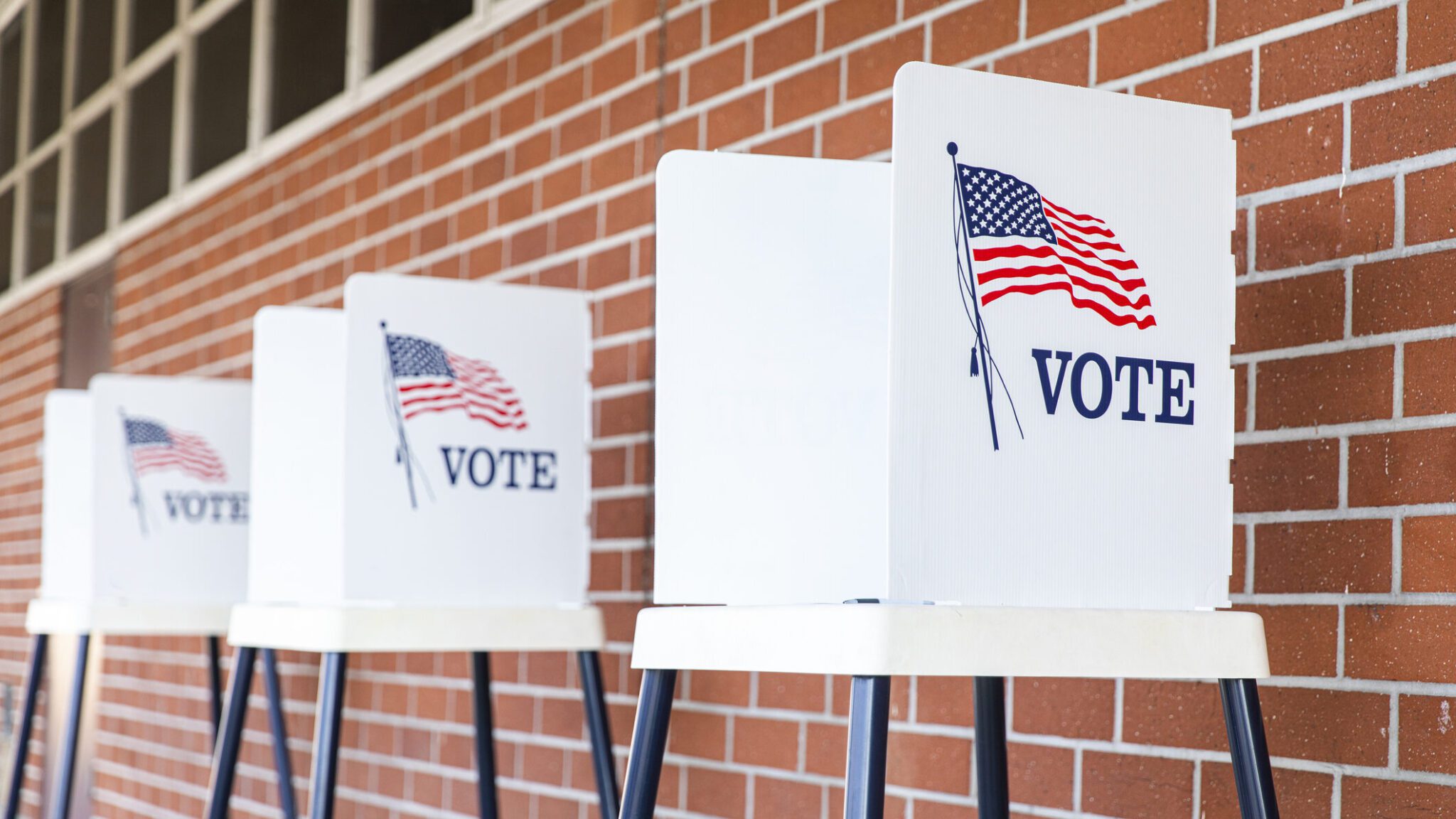5 Election Patents That Shaped the Democratic Process

As great as the election processes of the United States are compared to those of many other nations, voting in the United States has always had room for improvement. Where there is room for improvement, innovation follows, and the five following United States Patent and Trademark (USPTO) election patents show that innovation has drastically improved how we as a country choose the direction of the future.
Electrographic Vote Recorder and Register
Thomas Edison was onto something when he patented his improvement on previous voting methods. Edison’s apparatus allowed individuals to vote “yes” or “no” by flipping a switch one direction or another. An electric current was then used to record which direction the switch was flipped on one column or another on a piece of chemical paper. Though this invention was intended for use by legislators (and not the voting public), it certainly inspired many subsequent versions of the voting booths with which we are all now familiar.

Conducting prior art research before filing a patent application can have a profound influence on patent strategies and outcomes. Not only can understanding prior art help to determine whether an invention is patentable, but it can also inform how a patent application should be drafted to reduce the risk that it will be rejected by the USPTO. In fact, prior art can be useful through many stages of the patent process, especially for patent professionals who use LexisNexis® Intellectual Property patent search and analysis tools.
Voting Machine with Punch Card Attachment
Over a century after Edison’s electrographic vote recorder, the USPTO received an election patent application for a “Voting Machine with Punch Card Attachment.” Though this electricity-free election patent may seem like a step in the wrong direction, it actually improved multi-office election voting and enabled “listing candidates for more than one office in a single column, thus substantially reducing the weight and bulk in comparison to [then] existing voting machines.”
Portable Voting Booth
The portable design of many today’s voting booths can be credited to this portable voting booth patented back in 1984. This invention’s novelty stemmed from a variety of features – it was lightweight, compact, portable, durable, and stable – and its design enabled the quick setup of voting stations anywhere.


Method and Apparatus for Voting
Inching closer in time to present day, this 1996 “Method and Apparatus for Voting” election patent extended voting privacy to the illiterate and vision impaired. Before this innovation, many voters could only complete their ballots with the aid of another individual. The voting machine claims in this patent includes an audio player and a tactile and visual map that corresponds to an audio presentation that helps orient individuals to cast their votes without assistance.
Flash forward to present day and many companies are still working to improve the way we vote. One such company, Europe-based Scytl, has filed thirty-five patent applications worldwide and thirteen patents in the United States, and most of those applications are for election patents, aimed at developing secure electronic voting solutions.
Scytl has been granted eighty percent of the patent applications it has filed with the USPTO. However, three Scytl patents are currently pending before USPTO Group Art Unit 3685 – an art unit that has historically allowed the issuance of only 32.4 percent of the 7,347 patent applications it has examined. Scytl’s “Method and System for the Protection of Voting Options for Remote Voting” describes a method for voting remotely via computer, and it is also one of Scytl’s pending patent applications currently on the chopping block before Group Art Unit 3685.
These five election patents have been uncovered using the LexisNexis TotalPatent One® patent search platform. USPTO historical data and statistics are provided by LexisNexis PatentAdvisor® patent prosecution tools. Improving how we approach the patent process, TotalPatent One® and PatentAdvisor™ provide patent data and analysis solutions that prove we are a country built on innovation.
